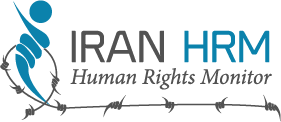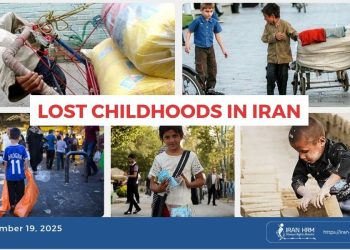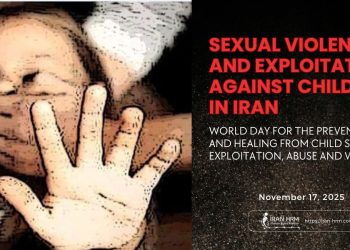Section 4
Systematic Misogyny at the Core of the Judiciary and Prisons
In a regime whose constitution institutionalizes male guardianship over women and whose judiciary is rooted in patriarchal jurisprudence, being a woman is not a privilege—it is a perpetual crime. Since the early days after the 1979 revolution, women—especially political activists, students, writers, and even the mothers and wives of political prisoners—have been subjected to systematic abuse, sexual humiliation, and physical and psychological torture.
Women: Stoning, Execution, Flogging
The misogynistic laws of the judiciary, combined with corruption and authoritarianism, have criminalized womanhood. Women accused of “illicit relations,” “improper hijab,” or even defending women’s rights have faced:
- Stoning
- Execution, often for allegedly murdering abusive husbands
- Long-term imprisonment for civic activism
Trials are often held without independent legal counsel, verdicts are issued without sufficient evidence, and forced confessions are a routine practice.
Sexual Assault and Rape: Weapons to Break the Iranian Woman
In the 1980s, especially during the 1988 prison massacre, numerous reports emerged of rape and sexual abuse of female prisoners, even on the eve of their execution. In blatant violation of all international laws, regime agents forcibly married virgin girls, raped them, and then carried out their executions.
One survivor stated:
“In the final nights, the sound of crying and screaming from young girls in Evin’s interrogation rooms never stopped. They raped them so that, in their belief, they wouldn’t go to heaven.”
Imprisonment for Hijab, Protest, or Participation in Demonstrations
In recent decades, thousands of women have been sentenced to long prison terms, flogging, or exile simply for:
- Removing their headscarves in public
- Participating in demonstrations
- Writing posts on social media
- Defending political prisoners
Tortured Women Denied Medical Care
Many incarcerated women have suffered from serious illnesses and were deliberately denied treatment. Despite warnings, the judiciary and prison authorities failed to act.
Brave Mothers as Targets of Revenge
The ruling regime cannot tolerate even motherhood. Mothers such as:
- Sattar Beheshti’s mother
- The Khavaran Mothers
- Nika Shakarami’s mother
have not only lost their children, but have themselves been repeatedly arrested, threatened, and humiliated.
Summary
Torture, rape, sexual humiliation, and denial of medical care are only a fraction of the violence inflicted on women by the regime’s judicial and security systems. This violence is not an exception—it is an unwritten law etched into the bodies and souls of thousands of women in Iranian prisons.
The Nameless, the Disappeared, and the Silent Genocide
When No Name or Grave Remains
In a system where law is tyranny and the judge is the executioner, many victims leave behind neither a name nor a grave. Thousands of Iranians, especially during the 1980s, the November 2019 uprising, the Woman, Life, Freedom uprising (2022), and other waves of protest, were arrested, tortured, and executed without a trace. Some never returned. No body. No news. No grave.
Enforced Disappearances: A Crime Against Humanity
According to the United Nations, enforced disappearance occurs when an individual is arrested by state agents and their fate is subsequently concealed. In Iran, this crime has continued since the early years of the revolution to this day.
- In the 1980s, many families never learned where their loved ones were buried.
- In recent years, night arrests, no information about whereabouts, and threats against families have emerged as new forms of this crime.
Mass Graves: From Khavaran to Saravan
Khavaran is a symbol of silence—the burial site of thousands executed in the summer of 1988, unmarked and denied gravestones.
Reports also point to unmarked mass graves in Sistan and Baluchestan, Kurdistan, and border regions.
The regime has repeatedly attempted to bulldoze these sites to erase all evidence of its crimes.
Stolen Corpses, Forced Confessions, and Withheld Remains
During uprisings, multiple reports have emerged of:
- Bodies being taken from hospitals,
- Families being forced to sign pledges,
- And bans on holding mourning ceremonies.
Numerous examples from the 2019 and 2022 protests—such as:
- Pouya Bakhtiari
- Nika Shakarami
- Sarina Esmailzadeh
show how the regime even fears the body of a deceased human being.
Silent Genocide: Killing of Identity
This repression is not limited to physical elimination. Many victims are also stripped of their cultural, linguistic, and political identity. Through psychological torture, ideological indoctrination, televised confessions, and erasure from public memory, the regime is carrying out a genocide of identity against the protesting society of Iran.
Conclusion
Under the mullahs’ regime, many of the dead will never be identified. But their namelessness is itself a testimony to a wider crime: a silent crime against a nation determined to survive.
It is our duty to document these victims; even if we do not know their names, we know their pain.







